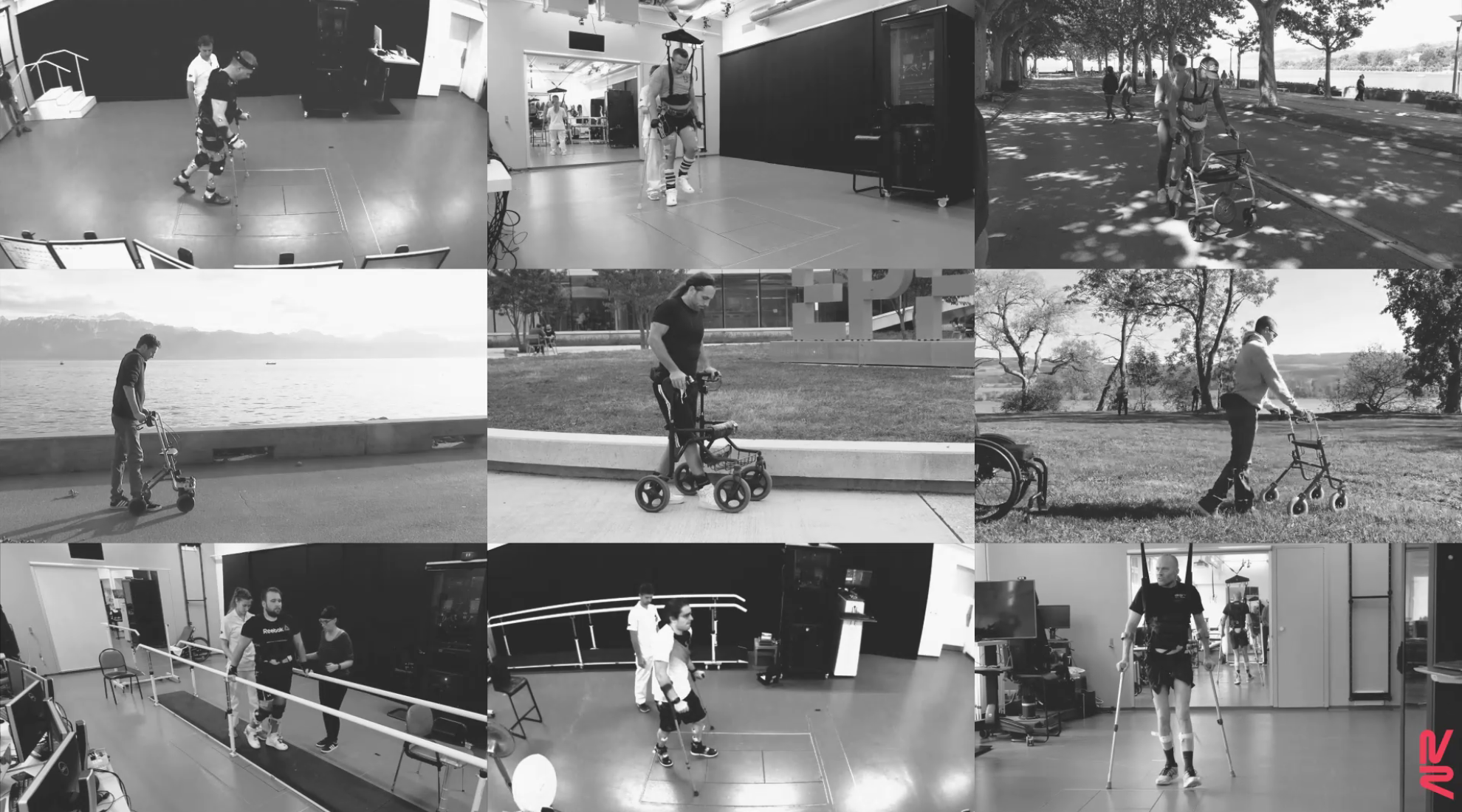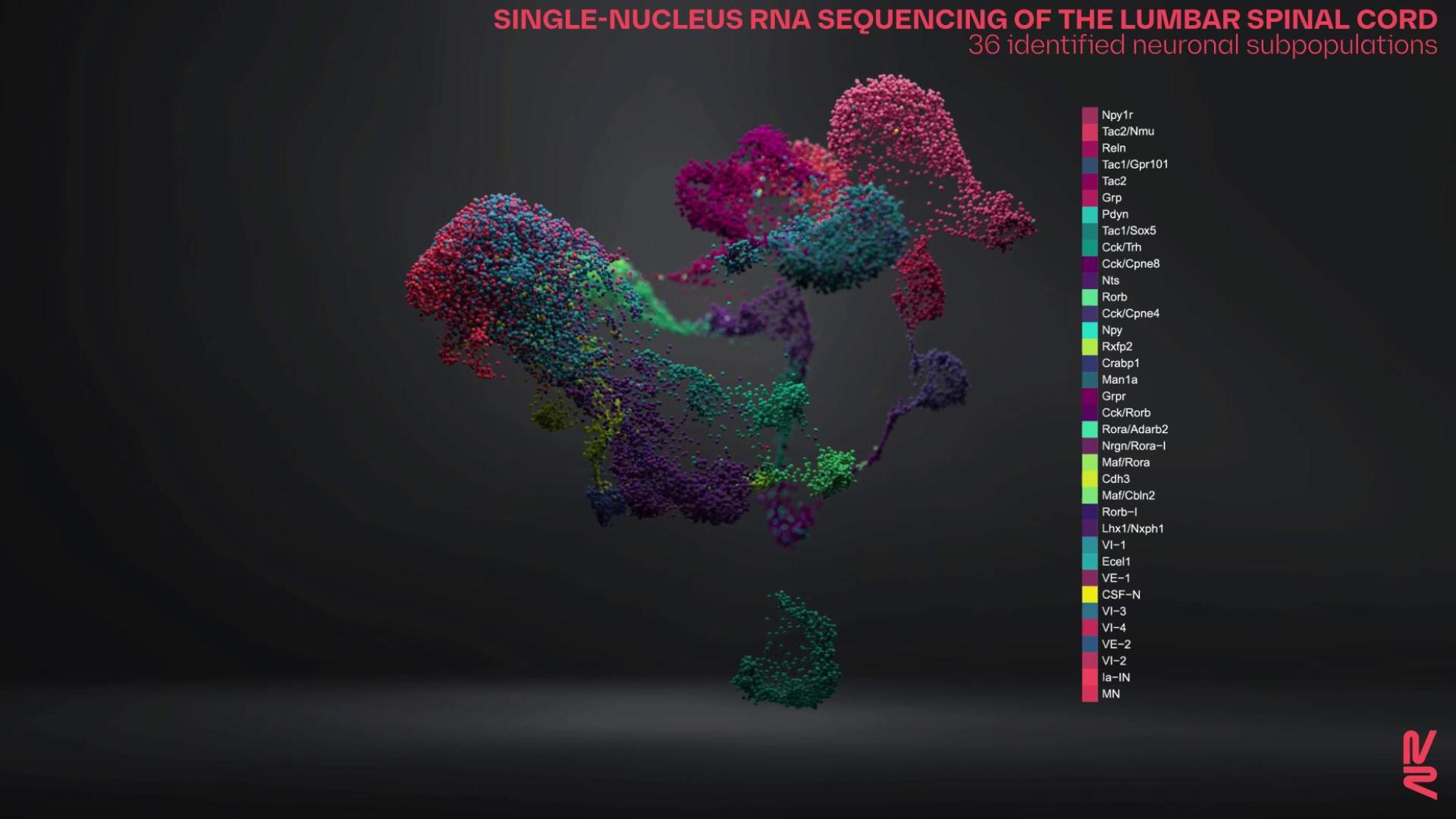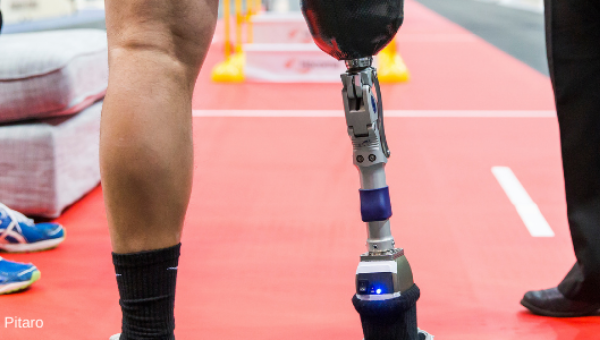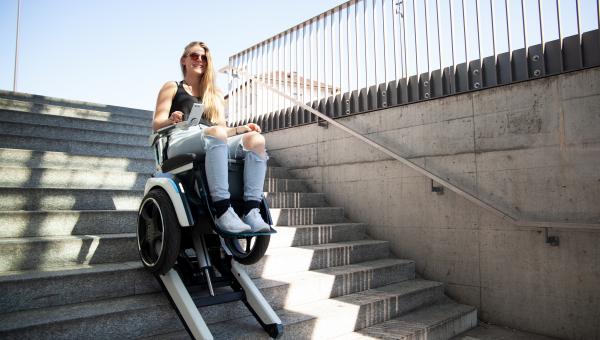The neurons that restore walking after paralysis

A study by Lausanne-based scientists has identified the neurons that may help paralysed patients walk more easily.
Scientists undertaking multi-year research at the .NeuroRestore research center in Lausanne have identified the neurons that need to be activated and restored through spinal cord stimulation to enable patients with paralysis to stand up, walk and rebuild their muscles. Their results have been recently published in the journal Nature.
Nine patients walk again
The team led by Grégoire Courtine from the Swiss Federal Institute of Technology Lausanne (EPFL) and Jocelyne Bloch from Lausanne University Hospital demonstrated the effectiveness of the therapy in nine patients. Not only did these patients' motor function improve, the improvements persisted after their neurorehabilitation, when electrical stimulation was switched off.
A specific neuron helps restore motor function
This success indicated that the nerve fibres used for walking had reorganised, explain the researchers. While studying the underlying mechanisms in mice, the team identified a surprising feature in a family of neurons that expresses a gene called Vsx2. These neurons are not needed for walking in healthy mice, but are essential for restoring motor function after spinal cord injury.
Visualising spinal cord activity
For the first time, scientists were able to visualise spinal cord activity in a walking patient, leading to an unexpected discovery. During spinal cord stimulation, patients' neuronal activity decreased when they were walking. The experts suspected that this could be because their neuronal activity

Visualising the spinal cord neurons while walking.
To prove this, they created the first 3D molecular cartography of the spinal cord. The high-precision model allowed the scientists to observe that spinal cord stimulation activates Vsx2 neurons. These Vsx2 spinal cord neurons are not normally needed for walking, as the researchers had also observed in the mice. They are, however, essential for electro-stimulated movement of the legs following a spinal cord injury.
This paves the way to more targeted treatments for paralysed patients. We can now try to manipulate these neurons to regenerate the spinal cord.




